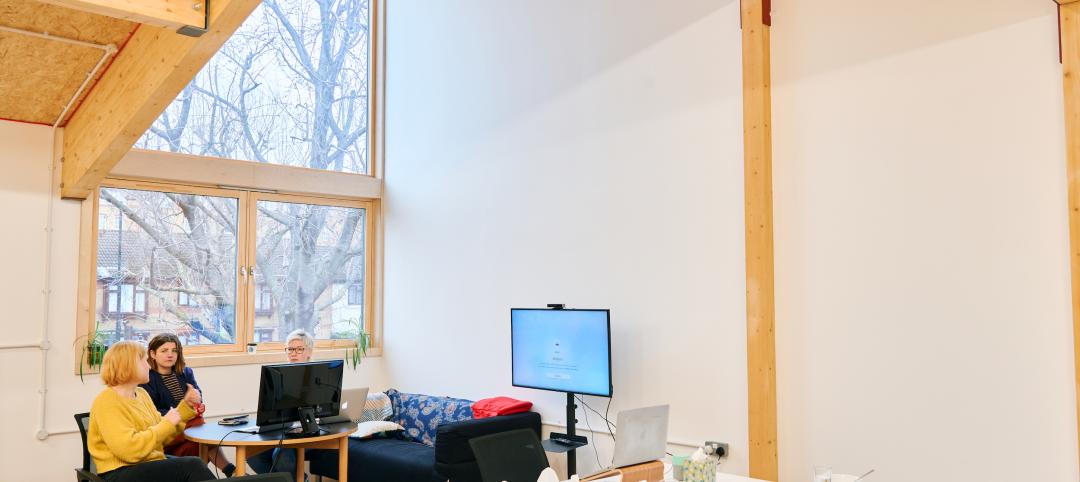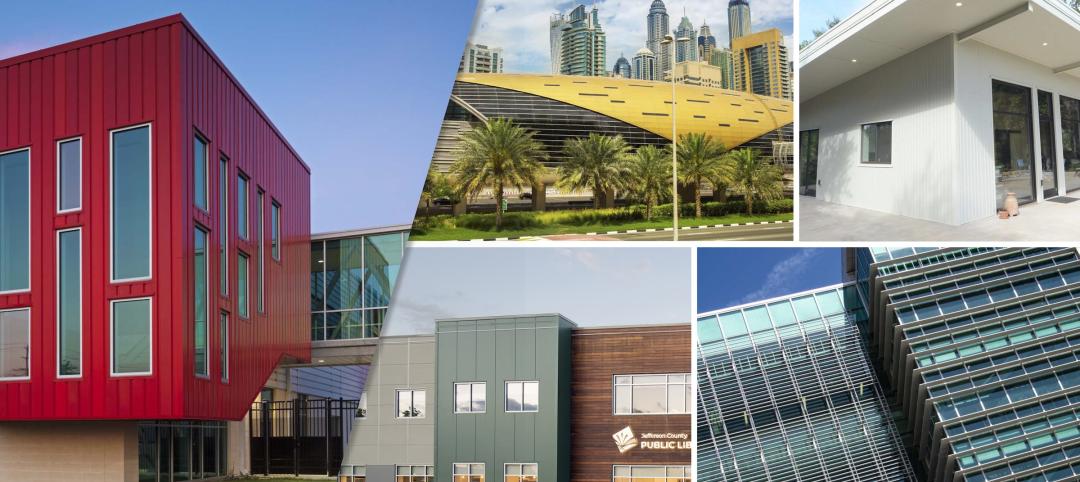Building information modeling is changing the way buildings are designed and constructed. Once regarded as the future of the industry, BIM is now being used by most Building Teams on a daily basis.In a recent survey conducted by Building Design+Construction, more than 75% of respondents indicated they currently use BIM or plan to use it. Respondents were also asked to comment on their experiences with BIM, what they liked and disliked about BIM, and what BIM-related advice they would give to their peers.
How long have you
(or your firm) used BIM?
- More than 5 years: 26%
- Never, and do not plan to use: 23%
- Less than 3 years: 18%
- 3-4 years: 17%
- Never, but plan to use: 16%
N = 115 | Note: Respondents could only make one selection.
Typical responses included: “BIM is a powerful tool for use by architects, engineers, and designers.” “BIM is a great step forward for the architectural design professional thanks to overall coordination of the design documents.” “BIM has paid for itself by saving construction labor man-hours.”
“I find BIM reduces time to create accurate construction documents and quickly produce schematic design visualization for my clients,” commented another respondent. “We’re migrating beyond adoption to companywide integration and pushing beyond that to the full supply chain spectrum to owners, trade contractors, manufacturers, architects, and designers,” added another.
Respondents also commented on their preference for a specific BIM program. “As a long-time user of BIM, we almost exclusively use Revit in all our projects.” “Revit is the only way to go. We’ve been 100% Revit for 10 years.”
Respondent opinion on BIM varied based on their user experience.
“BIM is a great tool that forces early design decisions. However, in the end it is only a tool, the project should not be held hostage by BIM.”
Another mentioned, “We’re almost moving to try to stop talking about BIM. For the first few years we were ‘pushing’; now the ‘pull’ is finally happening. It’s a shift to applied uses and values instead of discussions about technology—solving the problems of internal and external customers. It’s kind of a surprising turn of events—a shift of focus.”
Which of the following BIM programs have you (or your firm) used in the past 18-24 months?
- Autodesk Revit: 84%
- Graphisoft ArchiCAD: 6%
- Nemetschek Vectorworks: 6%
- Bentley Microstation: 4%
N = 71 | Note: Respondents could only make one selection.
BIM does have some detractors, as evidence by these comments: “The software is clearly not user-friendly—using BIM is a financial disaster for us.” “It is impossible to produce prelims that have a complete look. Information generated isn’t particularly useful and it’s not used at all in the field,” wrote another. “Until a critical mass of professionals on all levels are fully versed with BIM, it will be a very awkward process.” Others wrote, “The initial cost is out of the reach for most small practitioners. Worse than expense is the training required.”“Once in a while we have projects that are better served by AutoCAD due to availability of existing information or layouts from suppliers. However, those projects are becoming fewer. The benefits to our MEP engineers in coordination and scheduling are huge,” wrote another respondent.
Some of the specific problems related to BIM involve other members of the Building Team. “BIM does not work because subcontractors will not cooperate.” “Very few contractors are using BIM,” wrote another. “Engineers are having problems converting to BIM although we require them to use it on most projects.” “Designers need to know the project-scope point at which BIM becomes useful, and not before.” “BIM will cost the A/E community due to the extra time and expense without additional compensation. The information comes too late to coordinate and adjust drawings. Repeated computer crashes, or lock-ups, make it a miserable working environment.”
When do you use BIM?
- During schematic design, procurement, and operation: 34%
- During development of a
construction project: 32%- During pre-design: 28%
- During construction: 23%
- During post-design, pre-consultation: 18%
- All of the above: 32%
- None of the above: 31%
N = 102 | Note: Respondents could make multiple selections.
BIM USERS PROVIDE ADVICE TO INDUSTRY PEERS
A number of respondents offered some advice to other BIM users in the industry. “The true revolution in BIM will be when designers just have to hand off a model and data files to constructors and not fret over publishing 2D plans, sections, schedules, etc., from BIM.” A respondent suggested, “Design professionals need to share BIM models with owners and contractors to show them what can be done, and how it can be used. Share the model to improve the project and delivery.”
“Leverage scheduling early in the process to establish space types, pre-populate them with the appropriate objects, and model as little as possible,” commented another respondent.
Survey respondents also provided a brief glimpse into BIM’s place in the AEC industry of tomorrow. “BIM is the future and those architects that fail to get on board should consider early retirement. There needs to be more (and better) models available from suppliers.” Said another, “Any professional not using BIM will ultimately be left behind by the industry.”
MAJOR FINDINGS OF THE BIM STUDY
1. Autodesk Revit was the top choice for BIM programs, with 84% of respondents using it in the past 18-24 months.
2. BIM was used most often during schematic design, procurement, and operation (34%) and during development of a construction project (32%).
How often do building owners require BIM on one or more projects?
- Less than 25 percent: 76%
- 25-50 percent: 17%
- 50-75 percent: 4%
- Greater than 75 percent: 3%
N = 101 | Respondents could only make one selection.
3. Full support of construction documents (54%); and multidisciplinary capability serving different segments of the AEC industry (43%) were deemed the two most important general factors by respondents.
4. Construction partners that do not use BIM (50%) and clients that do not use BIM (42%) are the biggest problems faced by respondents. Training takes up too much time (37%) and the object library is not large enough/objects must be created (36%) are other problems.
5. In regard to owners that require BIM be used on their projects, 65% of respondents indicated the owners just specify that BIM be used on the project. Requiring a 3D model and clash detection using model navigation software (31%) was second most popular response.
6. Architects (47%) take most advantage of BIM-related technology followed by contractors (33%), MEP engineers (13%), and structural engineers (7%). BD+C
Related Stories
Design Innovation Report | Apr 19, 2023
Reinforced concrete walls and fins stiffen and shade the National Bank of Kuwait skyscraper
When the National Bank of Kuwait first conceived its new headquarters more than a decade ago, it wanted to make a statement about passive design with a soaring tower that could withstand the extreme heat of Kuwait City, the country’s desert capital.
Design Innovation Report | Apr 19, 2023
HDR uses artificial intelligence tools to help design a vital health clinic in India
Architects from HDR worked pro bono with iKure, a technology-centric healthcare provider, to build a healthcare clinic in rural India.
Design Innovation Report | Apr 19, 2023
Meet The Hithe: A demountable building for transient startups
The Hithe, near London, is designed to be demountable and reusable. The 2,153-sf building provides 12 units of business incubator workspace for startups.
Metals | Apr 19, 2023
Sherwin-Williams Coil Coatings releases new color forecast for architectural metal coatings
The Coil Coatings division of Sherwin-Williams has released its latest color forecast, FUSE, for architectural metal coatings. The report aims to inspire architects, product manufacturers and original equipment manufacturers (OEMs) in the coil and extrusion market over the next 3-5 years and beyond.
Airports | Apr 18, 2023
India's mammoth new airport terminal takes ‘back to nature’ seriously
On January 15, 2023, Phase 1 of the Kempegowda International Airport’s Terminal 2, in Bengaluru, India, began domestic operations. The 2.75 million-sf building, designed by Skidmore, Owings & Merrill (SOM), is projected to process 25 million passengers annually, while providing its travelers with a healthier environment, thanks to extensive indoor-outdoor landscaping that offers serenity to what is normally a frenzied experience.
Resiliency | Apr 18, 2023
AI-simulated hurricanes could aid in designing more resilient buildings
Researchers at the National Institute of Standards and Technology (NIST) have devised a new method of digitally simulating hurricanes in an effort to create more resilient buildings. A recent study asserts that the simulations can accurately represent the trajectory and wind speeds of a collection of actual storms.
Green | Apr 18, 2023
USGBC and IWBI unveil streamlined certification pathway for LEED and WELL green building programs
The U.S. Green Building Council, Green Business Certification Inc., and the International WELL Building Institute released a streamlined process for projects pursuing certifications for the LEED green building rating system and the WELL Building Standard. The new protocol simplifies documentation for projects that are pursuing both certifications at the same time or that have already earned one certification and are looking to add the other.
K-12 Schools | Apr 18, 2023
ASHRAE offers indoor air quality guide for schools
The American Society of Heating, Refrigerating and Air-Conditioning Engineers (ASHRAE) has released a guide for educators, administrators, and school districts on indoor air quality. The guide can be used as a tool to discuss options to improve indoor air quality based on existing HVAC equipment, regional objectives, and available funding.
Data Centers | Apr 14, 2023
JLL's data center outlook: Cloud computing, AI driving exponential growth for data center industry
According to JLL’s new Global Data Center Outlook, the mass adoption of cloud computing and artificial intelligence (AI) is driving exponential growth for the data center industry, with hyperscale and edge computing leading investor demand.
Healthcare Facilities | Apr 13, 2023
Healthcare construction costs for 2023
Data from Gordian breaks down the average cost per square foot for a three-story hospital across 10 U.S. cities.
















